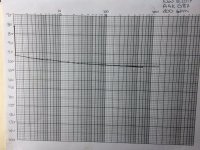DStyduhar
Member
I have been reading about this and it seems pretty straightforward but was wondering if a guy could do this with the currently installed pump or they need a bigger pump to draw down the well more substantially? I guess if you have a high recovery, maybe the average 3/4hp 10gpm type pump might not make a dent in the static level?
Here is how I plan to tes the recovery. Please let me know if this is legit and what I'm missing.
- Have the pump run full time for an hr (more ??)
- Turn off pump
- Use graduated tape to determine static level
- Monitor every minute to find the change in inches/feet per min. From there just calculate from feet or whatever to gallons to determine gpm recovery.
Or can the recovery be derived from basic well specs like pumping level and yield?
Advice on this?
thanks,
Drew
Here is how I plan to tes the recovery. Please let me know if this is legit and what I'm missing.
- Have the pump run full time for an hr (more ??)
- Turn off pump
- Use graduated tape to determine static level
- Monitor every minute to find the change in inches/feet per min. From there just calculate from feet or whatever to gallons to determine gpm recovery.
Or can the recovery be derived from basic well specs like pumping level and yield?
Advice on this?
thanks,
Drew

